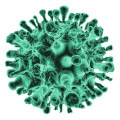Understanding Webbed Neck: Causes, Treatments, and Living with the Condition
Introduction
Have you ever heard of a webbed neck? It’s a unique physical condition that, while relatively rare, can significantly impact a person’s life. A webbed neck, also known as pterygium colli, is characterized by a broad, short neck with skin folds extending from the sides of the neck to the shoulders. Understanding this condition is crucial for those affected and their loved ones. Let’s dive into what causes a webbed, how it’s diagnosed, and the various ways to manage and treat it.
Causes of Webbed Neck
Genetic Factors
One of the primary causes of a webbed is genetic. It’s often associated with certain syndromes that have a genetic basis. This means that the condition can be inherited or occur due to mutations in specific genes.
Turner Syndrome
Turner Syndrome is one of the most well-known conditions linked to a webbed neck. This genetic disorder affects females, where one of the X chromosomes is missing or partially missing. Along with the neck, individuals with Turner Syndrome may experience short stature, heart defects, and other health issues.
Noonan Syndrome
Noonan Syndrome is another genetic disorder that can lead to a webbed. It affects both males and females and is characterized by distinctive facial features, short stature, and congenital heart defects. The webbed is one of the most noticeable physical traits of this syndrome.
Other Medical Conditions
Apart from Turner and Noonan syndromes, other medical conditions such as Klippel-Feil syndrome and certain connective tissue disorders can also result in a neck. These conditions often come with their own set of challenges and health concerns.
Symptoms and Diagnosis
Physical Appearance
The most apparent symptom of a webbed is the physical appearance of the neck itself. The skin folds create a wider, shorter neck, which is easily noticeable. This can sometimes lead to restrictions in neck movement.
Associated Health Issues
Individuals with a webbed neck may also face other health issues, depending on the underlying cause. These can include heart defects, skeletal abnormalities, and developmental delays.
Diagnostic Procedures
Diagnosing a webbed neck typically involves a physical examination and reviewing the patient’s medical history. Genetic testing is often performed to determine if the condition is associated with Turner Syndrome, Noonan Syndrome, or other genetic disorders.
Impact on Daily Life
Physical Challenges
Living with a webbed neck can present various physical challenges. Limited neck movement and associated health problems can affect daily activities and overall quality of life.
Psychological and Emotional Impact
The psychological and emotional impact of a webbed can be significant. Individuals may experience self-consciousness, low self-esteem, and social anxiety due to their appearance.
Social Interactions
Social interactions can also be affected. People with a neck might face curiosity or even bullying, which can further impact their emotional well-being. It’s essential to foster an inclusive environment to support those affected.
Medical Treatments
Surgical Options
Surgery is one of the primary treatments for a webbed, especially if the condition significantly impacts the individual’s life. Plastic surgery can help remove the extra skin folds and improve the neck’s appearance and function.
Non-Surgical Interventions
In some cases, non-surgical interventions may be recommended. These can include physical therapy to improve neck movement and posture, as well as the use of braces or supports.
Role of Physical Therapy
Physical therapy plays a crucial role in managing a webbed neck. Therapists can design exercises to enhance neck mobility, strengthen muscles, and alleviate discomfort.
Living with Webbed Neck
Coping Strategies
Living with a neck requires effective coping strategies. Acceptance, resilience, and focusing on positive aspects of life can help individuals manage the condition better.
Support Systems
Support systems are vital. Families, friends, and support groups can provide emotional support, practical advice, and a sense of community for those affected.
Personal Stories
Hearing personal stories from others with a webbed neck can be incredibly inspiring. These narratives often highlight the challenges faced and the triumphs achieved, offering hope and encouragement.
Advancements in Research
Current Studies
Research into the causes and treatments of webbed neck is ongoing. Current studies aim to better understand the genetic factors involved and develop more effective interventions.
Future Prospects
The future looks promising with advancements in genetic research and medical treatments. There’s hope for better diagnostic tools, more effective therapies, and improved quality of life for those with a webbed neck.
Conclusion
In summary, a webbed neck is a condition that, while challenging, can be managed with the right approach. Understanding the causes, seeking appropriate treatments, and having strong support systems can make a significant difference. If you or someone you know is affected by a webbed neck, remember that you’re not alone, and help is available.






